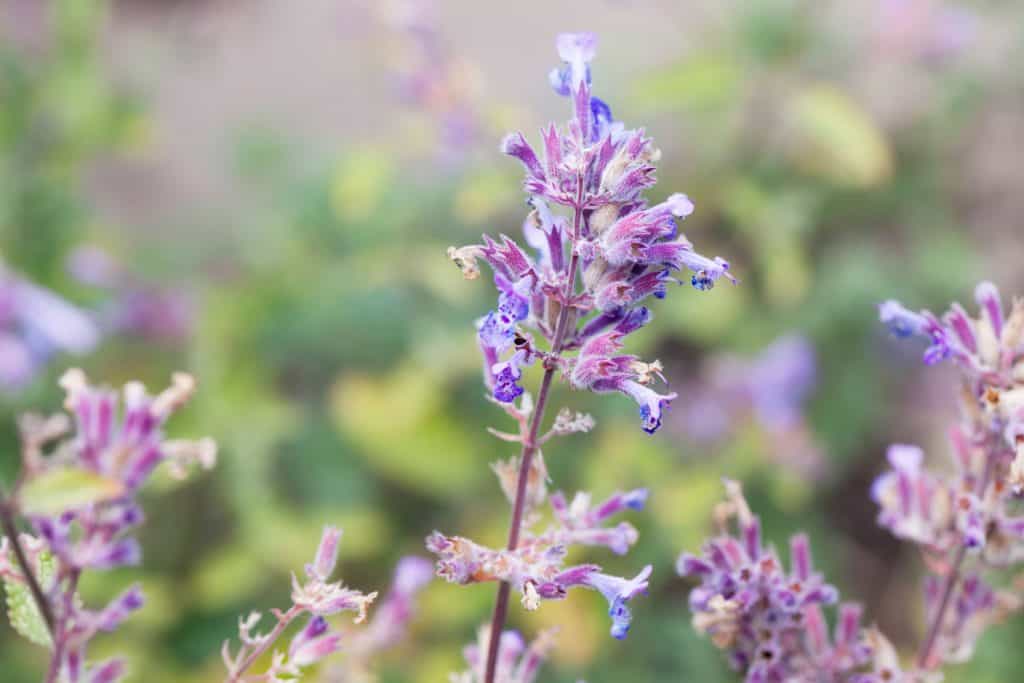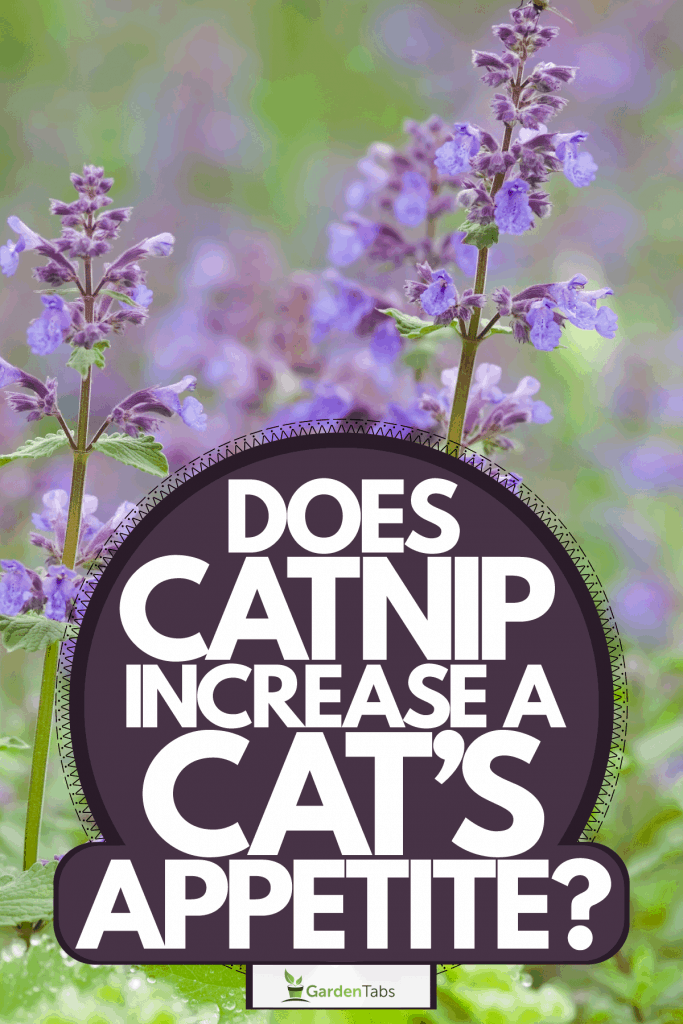Ever witnessed your cat acting a little peculiar around catnip? Some sniff, lick or even bathe in this captivating plant. Their strange reaction to catnip might get you thinking. Could it be affecting their hunger as well? In this article, we answer the question: does catnip increase a cat's appetite?
To answer the question thoroughly, we've tapped into a treasure trove of expert knowledge. We'll dissect the catnip plant, and reveal the mysterious compound behind all the frenzy.
From exploring the dramatic effects catnip has on your cat, to discussing its potential side effects and best methods of use. We're going all in!
The Science Behind Catnip's Influence On Your Cat's Appetite
Yes, catnip can act as an appetite stimulant in cats. Nepetalactone, the mildly hallucinogenic substance in the plant’s leaves and stems, can help increase a cat's food cravings. But the munchies won’t appear until the catnip’s high fades.
You now know that catnip can help increase a cat’s appetite. But proper catnip consumption will also help save your pet from possible adverse effects. In this post, we answer some frequently asked questions about catnip and its effects.
Does Catnip Give Your Cat The Munchies?
Cats that consumed catnip can go straight to their food bowl once the plant's psychological effects dissolve. Nepetalactone is the reason behind the effects supplied by catnip to cats, including the munchies.
This chemical substance lives in the leaves and stems of catnip and will become airborne when your pet disturbs the plant.
How Does Catnip Affect Cats?
Catnip’s effect can activate regardless of the method of consumption. Therefore, your pet can either eat or smell catnip and the plant will still release its effects.
Nepetalactone binds to the animal’s sensory neurons in the nasal cavity, activating different pleasure centers in the brain. In turn, this sensory overload can cause changes in cats’ emotions and behaviors.
A 1962 study states that many cats react to catnip by eating, licking, rolling, smelling, and rubbing it on their bodies. Some cats may also experience bursts of energy as they run around rooms in excitement after consuming catnip.
These behavioral changes can also include excessive drooling and stretching. But some felines can also experience a deep sense of calm and become mellow throughout the effects’ duration.
It’s also worth noting that catnip doesn’t affect every cat. An article from the Chemical and Engineering News website states that one in three cats doesn’t have nepetalactone sensitivity.
The researchers also mention that pet owners can check if their kittens have the attribute when their pets are around three to six months of age.
Furthermore, the effects of catnip last about 10 to 15 minutes before it fades. However, the period and intensity of the effects can reduce or lengthen, depending on the amount consumed.
Cat parents should be wary about the amount of catnip consumed by their pets as excessive consumption can increase the risk of adverse effects.

What Are The Side Effects Of Catnip On Cats?
Catnip consumption in reasonable amounts is safe for adult cats and kittens. However, adverse effects can appear if felines consume significant amounts of catnip.
But these outcomes are milder than eating expired cat food. These effects can include upset stomachs, vomiting, diarrhea, and headaches. Thankfully, cats are quite good at self-regulating, which means they’ll know when to stop if they had too much.
Still, cats can hurt themselves in other ways after consuming catnip. The animals can hurt themselves if they run into solid objects while feeling the increased excitement from the plant. Some felines can also lose their sense of balance momentarily, leading to situations like being unable to land on their feet.
Some cats can also experience extreme cases of lethargy after consuming significant amounts of catnip. Pet parents will know when these scenarios happen when their felines don’t want to react to other stimulants other than the smell of catnip.
Take note that cats aren’t hallucinating when the effects of the plant surface. Although it looks like the animals are staring at something in the distance, they’re only in a happy and highly comfortable state.
Take note that catnip offers little nutritional value in cats, unlike many wet cat foods. Cat parents shouldn't replace their pet's healthy diet with catnip or serious health consequences can appear.
What Is The Best Way To Give Your Cat Catnip?
The term ‘best’ is relative as each cat reacts to catnip differently. Pet parents should experiment with different catnip products to see which item their cats like the best.
Catnip Toys
One popular way of administering catnip to cats is through catnip toys. These catnip-infused playthings provide felines with extra fun while allowing them to feel the sensations provided by the hallucinogenic plant.
Search for catnip toys that contain fresh and dense catnip filling. Also, make sure that the toys have sufficient amounts of catnip instead of herb fillers.
Live Catnip Plants
Catnip plants are the freshest possible way to administer their effects to felines. Many pet stores sell fresh plants.
Otherwise, you can also search for catnip growing kits so you can build a small farm in your home if you want a constant supply.
Dried Catnip
Dried catnip is an excellent garnish for cat food. It’s also great for increasing your feline’s appetite without the worry of overdose.
This variant is also ideal for training; for example, spread some dried catnip onto a cat’s scratching post. That way, your pet will sharpen its claws on the post instead of the furniture.
Is Fresh Or Dried Catnip Better?
Fresh catnip is better if you want optimal potency from its effects. However, dried catnip can be the better option for some cases like training and increasing appetites.
The dried variant is also more convenient to administer than fresh catnip. Pet parents can also crush or bruise the leaves of fresh catnip to store them for future use.
Does Catnip Get Cats High?
The US Drug Enforcement Administration (DEA) defines ‘high’ as a user’s feeling of euphoria. A substance reacts to the brain’s reward system, causing the brain to release dopamine, a neurotransmitter responsible for feeling pleasure.
With that in mind, Dr. Bruce Kornreich of the Feline Health Center at Cornell University College of Veterinary Medicine mentioned in an interview that cats experience a high-like state upon consuming catnip.

Can Cats Overdose On Catnip?
Cats can’t overdose on catnip. However, reactions can still occur if your pets consume a significant amount of the plant. Still, these effects are mild at best, and should only last short periods before disappearing.
Cat parents should be wary as some felines can experience heightened aggression after smelling catnip. Therefore, it isn’t ideal if your cat is already exhibiting signs of aggression even before introducing the plant.
Additionally, some cat products contain mint to improve their salability factor. But this particular plant is toxic in cats. Take note that toxic doesn’t mean that the product will make your pet deathly ill.
However, mint can increase the risks of gastrointestinal upset in cats. Don’t confuse mint with catmint as the latter is another term for catnip.
How Often Should You Give A Cat Catnip?
Cats should consume catnip only once a day. Treat toys and other products infused with the plant similarly. You can still give your pet more catnip, but the risks of becoming desensitized are higher if you do.
Final Words
Catnip can help increase a cat’s appetite, which happens after the plant’s effects disappear. It’s because of a chemical called nepetalactone, which many felines find irresistible.
Aside from increasing appetites in cats, catnip can also induce euphoric feelings, allowing these animals to become excited or lazy. However, it’s possible for cats to overdose on catnip, causing minor health issues like nausea and vomiting. Thankfully, these effects should only last for a few minutes.

Some elements on this page may have been created by our team using advanced AI to provide you with top-notch cat inspired ideas. Read more about our AI Content Policy.
